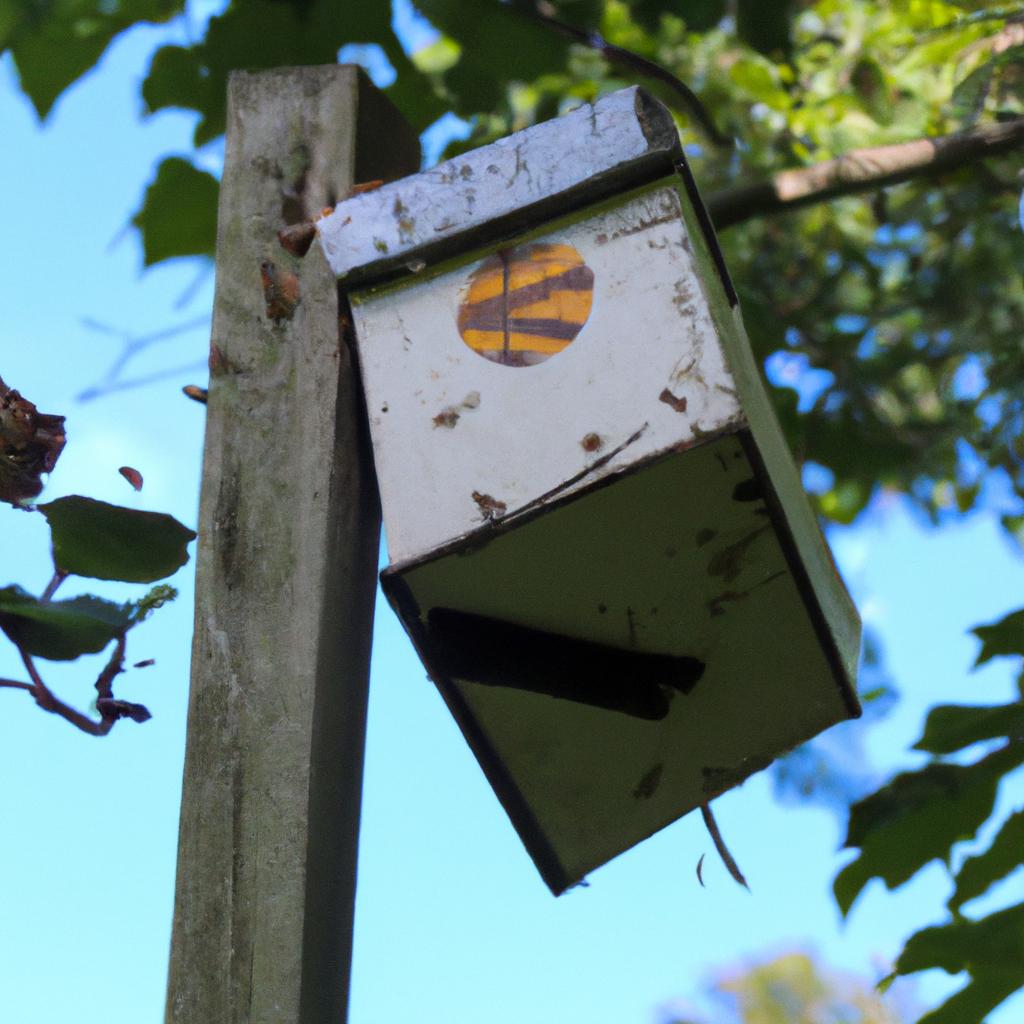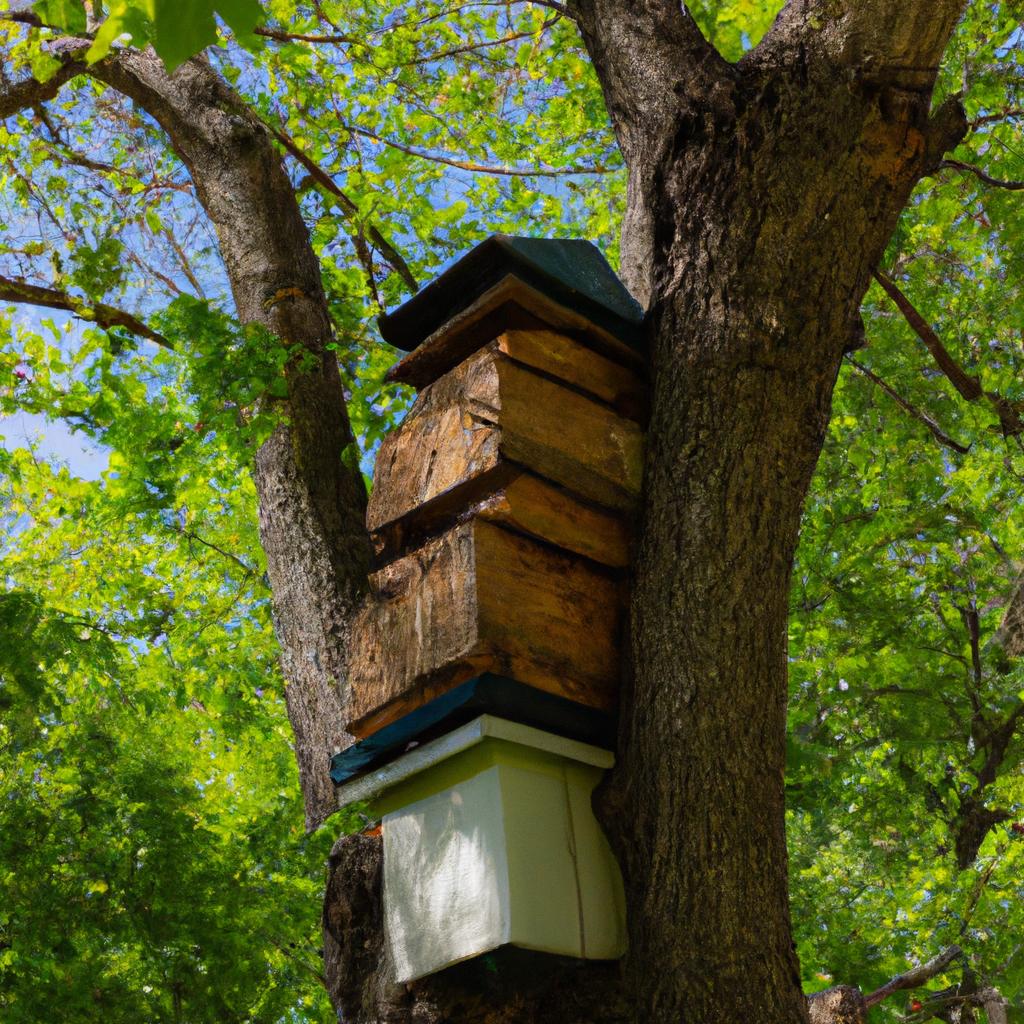Beekeeping is a rewarding pastime that provides many benefits, including honey production, pollination services, and the opportunity to learn about and appreciate nature. However, to set up a successful beekeeping operation, it is essential to understand how to properly place and maintain bee hives.
One key consideration when setting up a bee hive is determining the appropriate height off the ground. This article will explore various factors to consider when deciding on the hive’s height, recommended heights, pros and cons of different heights, and tips for proper bee hive placement and maintenance.
Factors to Consider When Deciding Bee Hive Height

Several factors should be taken into account when deciding on the height of a bee hive.
Bee Behavior and Preferences
Firstly, it is essential to understand bee behavior and preferences. Bees are more likely to thrive in a hive that is placed at a height that is close to their natural preference, which is typically around 10-20 feet off the ground. Higher hives may be more challenging for bees to access, while lower hives may be more vulnerable to predators and pests.
Accessibility for Beekeepers
Another factor to consider is accessibility for beekeepers. The hive should be placed at a height that is easy to access for maintenance, such as adding or removing frames or conducting routine inspections. It is also essential to ensure that the hive is placed on a stable and level surface, as this will make maintenance tasks much more manageable.
Safety and Protection from Predators and Pests
Finally, safety and protection from predators and pests are crucial considerations. Placing the hive at a height that is too low may make it easier for predators, such as bears or raccoons, to access the hive and cause damage. On the other hand, placing the hive too high may make it difficult to protect against pests such as mites or wax moths.
Overall, the ideal height for a bee hive will depend on these and other factors. The next section will explore recommended heights for bee hives.
Recommended Bee Hive Height

While there is no one-size-fits-all answer to the question of how high a bee hive should be off the ground, there are industry standards and guidelines to consider.
According to the American Beekeeping Federation, the ideal height for a bee hive is between 2 and 4 feet off the ground. This height range is beneficial for beekeepers, as it allows for easy access to the hive and easier maintenance tasks. It also makes it more difficult for predators to access the hive, as it is not too low to the ground.
However, there are several factors that may affect the recommended height of a bee hive. For example, in areas with heavy snowfall, it may be necessary to raise the hive higher off the ground to prevent it from being buried in snow. Similarly, in areas with high winds or frequent flooding, a higher hive may be more appropriate.
Different options for hive placement and elevation can also be considered. For example, some beekeepers choose to place their hives on raised platforms or stands, which can provide additional protection against pests and predators. Others choose to place their hives on the ground, which can be beneficial in areas with mild climates.
Pros and Cons of Different Bee Hive Heights
There are several advantages and disadvantages to different bee hive heights.
Low Hive Placement
Advantages of placing a hive low to the ground include easier access for maintenance tasks and a lower risk of damage from high winds. However, low hives are more vulnerable to predators and pests and may be more challenging to protect.
Medium Hive Placement
A medium-height hive, between 2 and 4 feet off the ground, is the most commonly recommended height. It offers a balance between accessibility for beekeepers and protection against predators and pests. However, it may still be vulnerable to flooding or heavy snowfall in some areas.
High Hive Placement
Placing a hive higher off the ground, such as on a platform or stand, can provide additional protection against predators and pests. It may also be necessary in areas with heavy snowfall or flooding. However, higher hives may be more challenging to access for maintenance tasks, and may require additional equipment such as ladders or lifts.
Overall, the ideal height for a bee hive will depend on various factors such as bee behavior, accessibility, and protection against predators and pests. Beekeepers should carefully consider these factors when deciding on the placement and height of their hives.
Tips for Proper Bee Hive Placement and Maintenance
Once you have determined the appropriate height for your bee hive, it is essential to follow some best practices for setting up and maintaining the hive.
Best Practices for Setting Up Bee Hives
When setting up your bee hive, it is vital to follow some best practices, including:
- Choosing a location that provides ample sunlight, good drainage, and protection from wind and rain.
- Ensuring that the hive is stable and level.
- Providing a source of fresh water nearby.
- Placing the hive away from areas where people or pets may disturb the bees.
How to Monitor and Maintain Bee Hives at Different Heights
Monitoring and maintaining bee hives at different heights may require some adjustments. For example, if the hive is too high, you may need to use a ladder or other equipment to access it. Conversely, if the hive is too low, you may need to take extra precautions to protect it from predators.
Regardless of the hive’s height, it is essential to conduct routine inspections to check for signs of disease or pest infestations. Regular maintenance tasks, such as cleaning and replacing frames, should also be performed as needed.
How to Troubleshoot Common Issues Related to Bee Hive Placement
If you encounter issues with your bee hive placement, several troubleshooting steps can help. For example, if your hive is too low, you may need to elevate it on a stable platform. If your hive is too high, you may need to use a pulley system or other equipment to make maintenance tasks more manageable.
Other common issues related to bee hive placement include issues with sunlight exposure, wind protection, or water sources. Addressing these issues promptly can help ensure the health and productivity of your bee colony.
Conclusion
In conclusion, proper bee hive placement and height are crucial considerations for anyone interested in beekeeping. By taking into account factors such as bee behavior, accessibility, and safety, you can determine the ideal height for your bee hive and set it up for success.
Remember to follow best practices for setting up and maintaining your hive, including routine inspections and maintenance tasks. By doing so, you can enjoy the many benefits of beekeeping and contribute to the health and well-being of our planet’s ecosystems.
For more information and resources on beekeeping, visit BeeKeepinglove.com.
